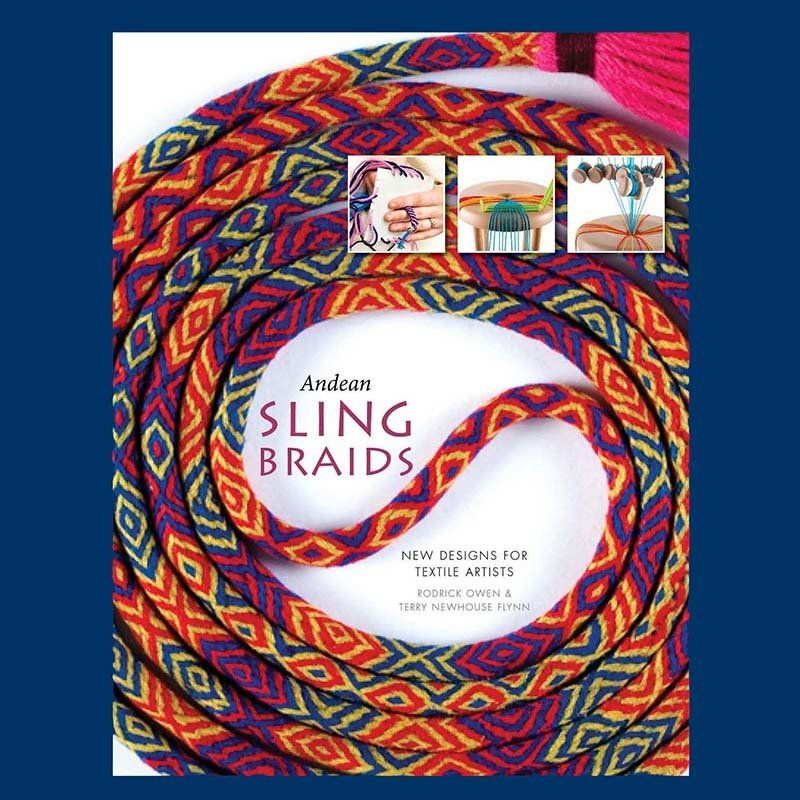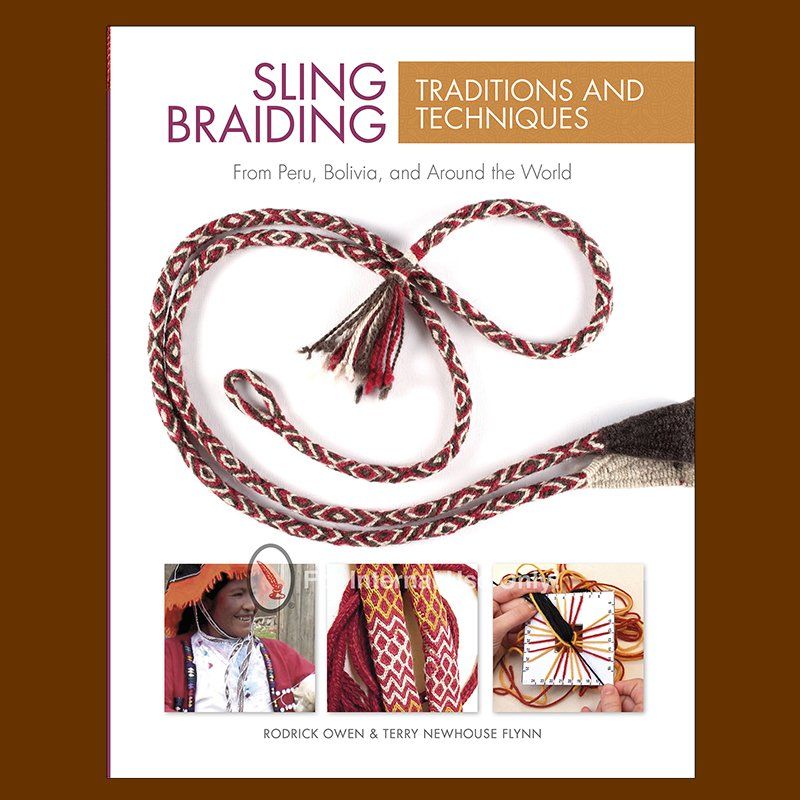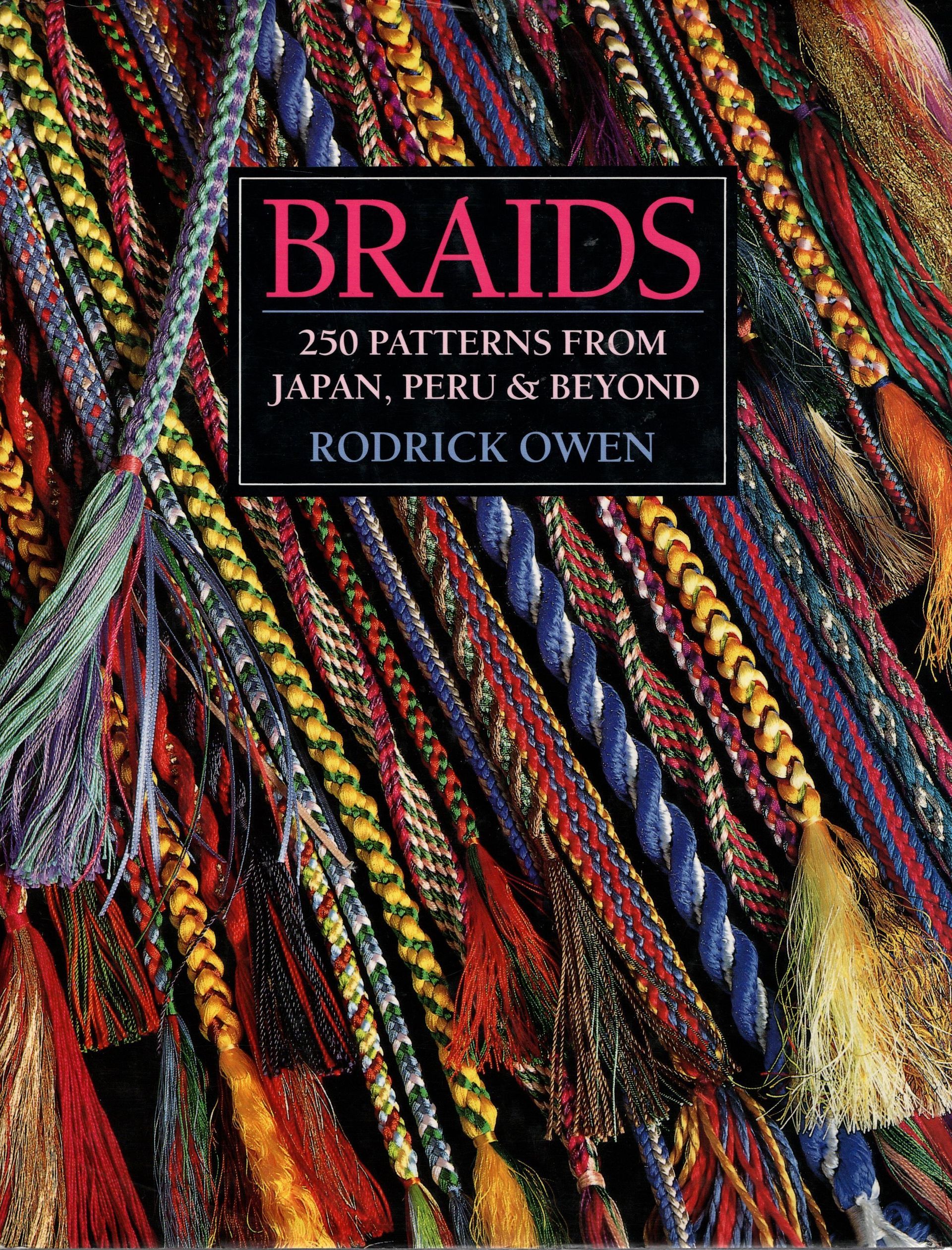Books
Andean Sling Braids - New Designs for Textile Artists by Rodrick Owen and Terry Flynn - Learn to make the decorative braids used in the sling-making traditions of Peru and Bolivia; this detailed guide, including 400 step-by-step photos plus hundreds of diagrams, teaches the technique and over 100 designs for weavers, craftspeople, jewelry designers, basket weavers, and others interested in using braids for embellishment. In-depth detailed instructions are given, along with clear diagrams; recommended braiding yarns for slings and kumihimo; detailed set-up, making, and finishing instructions; and many fascinating contemporary applications. This book introduces a new piece of equipment, the core frame, and gives instructions for making it from wood and dowels. When the core frame is used with a braiding stand and bobbins, a wide variety of core-carrying braids become accessible to kumihimo braiders. Most of the braids, from 4 to 40 strands, can be made on a braiding card/disk, and 50 patterns can be made on the stand without a frame. Follow this link for a preview at: Schiffer Publishing, Ltd. The book is also available from book sellers including BraidersHand.
Sling Braiding Traditions and Techniques from Peru, Bolivia and Around the World by Rodrick Owen and Terry Flynn. Learn to make the decorative braids used in the sling-making traditions of Peru and Bolivia; this detailed guide, including 400 step-by-step photos plus hundreds of diagrams, teaches the technique and over 100 designs for weavers, craftspeople, jewelry designers, basket weavers, and others interested in using braids for embellishment. In-depth detailed instructions are given, along with clear diagrams; recommended braiding yarns for slings and kumihimo; detailed set-up, making, and finishing instructions; and many fascinating contemporary applications. This book introduces a new piece of equipment, the core frame, and gives instructions for making it from wood and dowels. When the core frame is used with a braiding stand and bobbins, a wide variety of core-carrying braids become accessible to kumihimo braiders. Most of the braids, from 4 to 40 strands, can be made on a braiding card/disk (included in with the book), and 50 patterns can be made on the stand without a core frame.
Braids - 250 Patterns from Japan, Peru & Beyond - by Rodrick Owen. Originally published in 1995, this classic is now available as a downloadable e-book from Taproot Video.
This book is written with instructions for using a marudai and bobbins/tama as well as for a square braiding card or disk. There is a wealth of information for both the novice and the experienced braider. There are usually many samples of each structure in different color ways. The weight and number of threads used is also given with the bobbin weight. The braids are made in pearl cotton, traditional Japanese braiding silk and synthetic silk, and in weaving silks. The braids are classified as from Japan, Peru (Bolivia), or the United Kingdom when Rodrick’s or students’ experiments resulted in something new.
Rodrick’s answer for the reason for making braids is, “On a personal level you will know the answer when holding a length of finished braid in your hand, feeling its weight, its drape, watching the colours and feeling the sensual movement as it is drawn through the fingers from one hand to the other, give an inner answer to the question why the braid has been made. It is an expression of inner meaning, it has been a personal journey - from crossing and arranging the threads, through the process of making, watching the braid as it slowly grows in length and, at the end, a feeling of completeness.”



